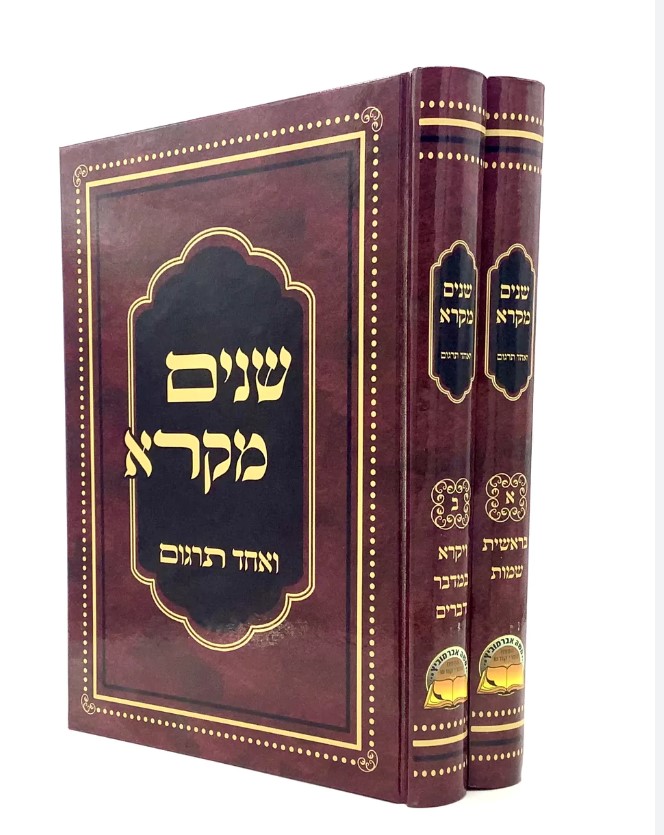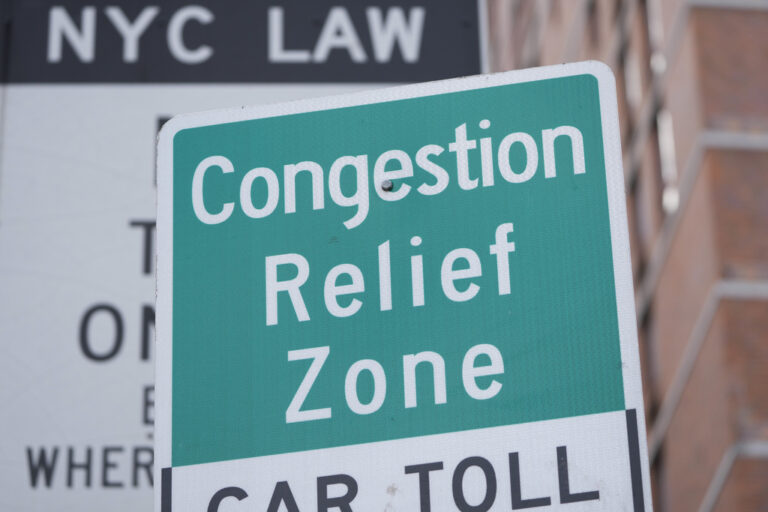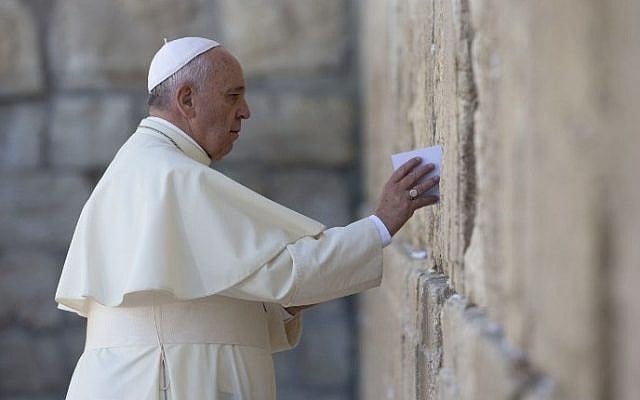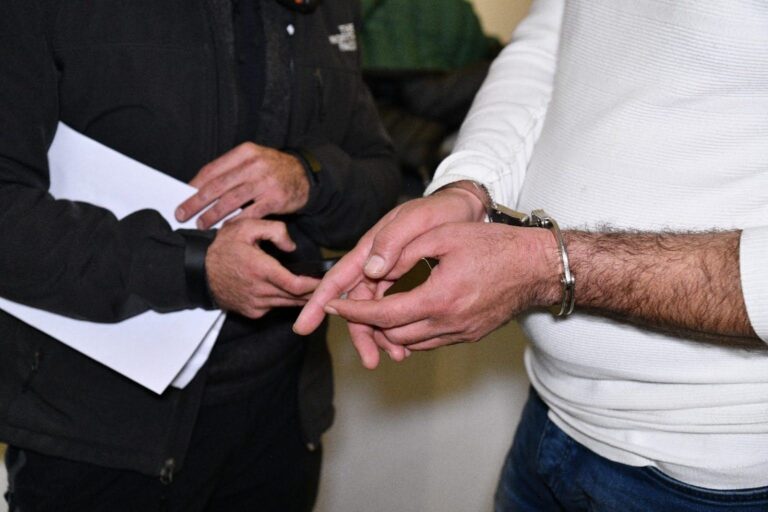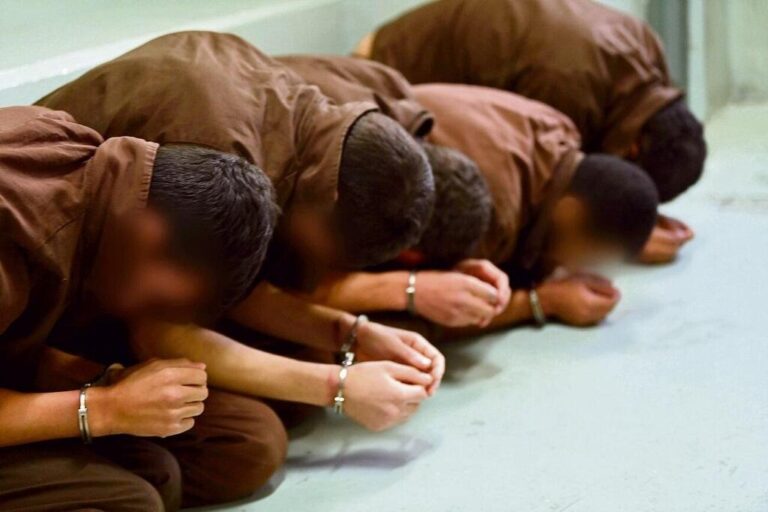By Rabbi Yair Hoffman
The Laws of SHNAYIM MIKREH VeECHAD TARGUM
The purpose of this article is to make available, in an easily understood format, the laws of “Shnayim Mikreh VeEchad Targum,” – “Reviewing the Weekly Parsha” in order to spread the observance of this Mitzvah. It is an unfortunate reality that this particular Mitzvah is still neglected, even during these times, when Boruch Hashem, we are experiencing a resurgence of Torah observance.
The Mitzvah of Shnayim Mikreh VeEchad Targum is an important one. It is one of the few Mitzvos where our Chazal assure us longer life if we but perform it. It is a Mitzvah that, according to many authorities (Netziv, Sheiltos, Meseches Sofrim), including the Aruch HaShulchan, was, for the most part, ordained by Moshe Rabbeinu himself, later being augmented by Ezra.
The Bach (Orech Chaim 685) writes that a Takanas Moshe, an enactment of Moshe Rabbeinu, has the status of a Mitzvah DeOraisa, a Biblical Mitzvah. According to this view, Shnayim Mikrah is a biblical Mitzvah. Although the halacha is not in accordance with the Bach on this, it does not need to be stated that a Takanas Moshe carries a high degree of significance.
It is also a Mitzvah that has a deep qualitative effect upon our commitment to Torah and to Hashem. The Chofetz Chaim writes (chapter 21 of Zachor LaMiriam) that the performance of this Mitzvah strengthens Emunah -faith. In a similar vein, the Taamei HaMinhagim (page 160 of Kuntrus Acharon) writes that one who grooms himself for the Shabbos and completes the Shnayim Mikreh VeEchad Targum before midday is assured that he will not come to an Aveirah Chamurah the entire week.
It is also a Mitzvah that should not be performed in a perfunctory manner. Great care and attention should be placed to every verse and every Rashi or Targum. The Chsam Sopher writes in a responsa that his comments on Chumash were primarily conceived while he was reviewing the weekly Parsha. The Chofetz Chaim states that one who performs it should be very careful in reading the words of Rashi, as it states (Shmos 15:26), “And you shall listen to His Mitzvos” and Rashi explains, “Turn your ear to study it most carefully.”
In this article, the Aruch HaShulchan’s comments on these Halachos have been translated. The text was reparagraphed and paragraph headings were inserted to facilitate greater readability. The Mishna Brurah’s opinions and the rulings of others were added in the footnotes. Some of the additional references can be quite fascinating. For example, in Parshas BaMidbar, Rav Palagi writes that an extra verse from Parshas Nasoh must be added.
1] The Gemorah (Brachos 8b) states:
A person should always complete the [weekly] parsha with the assembly, twice with the text and once in Targum, even [the names of the cities] Atros and Divon . For everyone who completes the [weekly] parsha with the assembly, twice with the text and once in Targum, the length of his days and years are extended.
In other words, before the congregation reads the parsha in Shul, a person should read it in his home, whether it be on that Shabbos itself in the morning or throughout that week. However, he may not read it earlier than that week. Some individuals have the custom to read a small section of it each day of the week, and they complete it on Shabbos (Talmid Rabbeinu Yonah).
Therefore, even though every person hears the Torah portion read publicly each Shabbos from the reader, there is, nevertheless, an obligation to read to oneself, each week, the parsha of that week twice in the text and once in Targum . [The Levush cites an allusion to this in the Torah. It states,”VeAileh Shmos Bnei Yisroel” and Shnayim Mikrah VeEchad Targum in abbreviation spells Shmos..And those that are obligated are all Bnei Yisroel .]
2] The reason for it is not known, but certainly when Moshe Rabbeinu ordained that we read the Torah , he ordained this edict as well , that each person read it twice in the text and once in the Targum.
THE LEVUSH’S REASON
The Levush writes that the reason is to ensure that everyone be proficient in the Torah, but as is understood this reason is insufficient .
THE ARUCH HASHULCHAN’S REASON
It would seem that the obligation in Torah is listening and studying as we say in the blessing of Ahava Rabba, “To listen and to study.” The listening is [to be done] on Shabbos from a kosher Sefer Torah written properly and according to Halacha. Therefore, one should study it beforehand from a Chumash and one should ascend in holiness to listen to it from a Sefer Torah.
It is stated in Sotah (37b) that the generalities and the specifics [of the Torah] were said at Sinai and were repeated a second time in the Ohel Moed and were repeated a third time in Arvos Moav (refer there). We must therefore study it three times, even a verse that does not have a Targum (as will be explained) corresponding to these three [times that the Torah was taught]. However, where there does exist a Targum they chose that the third time be in Targum so that he will understand what he is studying. The [language of] Targum is similar to Lashon HaKodesh and was given at Sinai, as we say in Nedarim (37b), “And they shall read it in the Torah of Hashem mefurash” – Mefurash is Targum, and it was given at Sinai as explained there. However they had forgotten it and Unkeles returned it and re-established it as we say in the beginning of Megillah [I saw it similarly stated in the Ohr Zaruah in the name of the Maggid Mishna but it was not sufficiently explained].
THE RAAVAN’S REASON
Some say that it [Shnayim Mikrah VeEchad Targum] corresponds to the two readers [of the Torah as it is being read] and the one translator.[Raavan]
3] There is to wonder whether we specifically require that it be read twice in the text and [only] afterward it be read in the Targum or whether he also fulfills the obligation if he read it once in the text, then the Targum and then [the second time] in the text.
From the words of the Levush it is clear that this [the second way] is his opinion. For he wrote:
“It appears to me that if a man read once the text and once the Targum alone, and afterward when they read the parsha in shul he read it with the Chazan word by word, he has fulfilled the obligation of Shnayim Mikrah VeEchad Targum.”
We see that he writes explicitly that the Targum could be in the middle. Even though he writes that our Master the Beis Yosef does not agree that he fulfills his obligation in this manner, that is because he holds he cannot fulfill his obligation through the Shliach Tzibbur, but not because the Targum is in the middle.
The Gedolim have already written that even the Beis Yosef does not disagree with this, rather, he is referring to [mere] listening where he does not fulfill his obligation, but if he recites it with the Chazzan word by word he does fulfill his obligation [Prisha and Ohr Zaruah] .
There is an opinion that even regarding listening he fulfills his obligation [Magen Avrohom subparagraph 8 quoting the Lechem Chamudos]. Similarly there is an opinion that if he heard the Shnayim Mikrah VeEchad Targum he also fulfills his obligation if he made sure to hear it (word by word) [Shaarei Teshuvah citing the Radbaz].
According to my humble opinion we require specifically learning and not listening as we have written and see paragraph 13.
4] There is an opinion that states that the reading of Shnayim Mikrah VeEchad Targum is in the following manner: To read each parsha, that is every psucha or stumah two times, and then afterward the Targum [Magen Avrohom subparagraph 1 quoting the Maharshal and Shla] .
STILL ANOTHER REASON
It would appear so logically [that the method should be to stop at each Parsha in the Sidra], because the Holy One blessed be He related to Moshe each parsha at one time, and between each parsha there was a break, as it says in Toras Kohanim in the beginning of VaYikra (1:1):
“What purpose did the interruptions have? In order to give Moshe a period to reflect on each parsha.”
Rashi cites it in his commentary on Chumash.
Perhaps because of this reason, they commanded us to read Shnayim Mikrah VeEchad Targum, for it says in the Midrash [Yalkut Shimoni Iyov 28], “Each and every item that the Holy One Blessed be He told Moshe, He would say twice in His heart and afterward he told it to Moshe. What is the reason? [Az Raah Vayisaprah Haichina VeGam Chakrah] – “He saw it then and recited it” [is] one time [“He prepared it and also inquire into it” [is] another time and afterwards it states, “and He said to the man..” – this is Moshe] etc . Nevertheless, the Holy One Blessed Be He did relate to Moshe each Parsha by itself.
In the beginning of Megillah [4a] they state, “I will review this Parsha and teach it..” refer there. Parsha is defined as a psucha or a stumah, and that which is referenced in the Chumashim, “third [aliyah] or fourth [aliyah] is not considered with any significance. [And in Brachos 8a where they state that a person should always complete his parshios with the congregation, which indicates that each sidrah is called a parsha, this is not so. For this is the explanation: – the parshios of that sidrah.]
5] However according to this, there would be a question when there is a new parsha in the middle of a posuk. As in Pinchas, “And it was after the plague (BaMidbar 26:1).” And in Parshas VaYishlach, “And the sons of Yaakov were twelve..(Bereishis 35:22)” And in Dvarim, “..from Eilat and from Etzyon Gvar (Dvarim 2:9).” What should be done? If he stops there and reviews the Parsha, he is in the middle of a Posuk!
Nevertheless, it appears that he should do this . And if a problem is raised of, “any verse that Moshe did not stop at, we do not stop at..” here, Moshe did, [in fact], stop. Similarly in regard to the ten commandments in “Do not murder (Shmos 20:13)” there is a parsha etc., refer there .
6] There are those that wrote to read each verse twice and afterward the Targum , [Arizal and Maadnei Yom Tov] and at the end of the Sidrah he should also read a posuk after the Targum so that he will end with Torah [Magen Avrohom ad locum].
A proof to this is found in the language of the Gemorah, “Two times [Shnayim] Mikreh and one time Targum” the language is in masculine and Parsha is feminine while Posuk is masculine. However, there is to answer that it is referring to the man, for the man says two times Mikreh and one time Targum.
It appears to me that this depends on the reasons. For according to the reason that we wrote in paragraph 4, it is certainly referring to the Parshah, and so too according to the reason that we wrote in paragraph 2 [See “Aruch HaShulchan’s Reason.”] However, according to the other opinion at the end of paragraph 2 [“Raavan’s Reason”], it certainly is referring to each posuk.
7] There are those that read the entire Sidrah and afterwards a second time, and afterwards the Targum. And it is somewhat indicative that this is the correct method from the language of Rashi in Brachos there, and from the Gemorah where it states that Rav Bibi Bar Abaye wished to complete the parshios of the entire year before Yom Kippur etc. The reference is to all the sidros, after which it says he wished to say them early. Rashi explains that he wished to do all the parshios on one Shabbos, see there. So we see explicitly that he calls a sidrah “parsha.”
And so it is seen from the words of the Ohr Zaruah HaGadol (Siman 12): “He wished to complete all the parshios of the year.” Rabbeinu Chananel had the text “the parshios of the Kallah (semi-annual gathering for study purposes)” that is the four parshios that we read in Elul and the four that we read in Adar.” We see that he calls a Sidrah “parsha.”
Therefore, it would seem to my humble opinion that there are no restrictions , and that one may perform it in whichever manner that one wishes, as each of them have halachic backing.
It is also possible that at times one may perform it one way and at times the other way. And if you might think that there would be a restriction to perform it in one particular way, the early Rabbis would not have refrained from stating this .
There is an opinion that wrote that if he is fluent in the taamim , he should read it from a Sefer Torah , and he should immerse after reading it and cut his fingernails before the reading [Magen Avrohom there]. And this is a Midas Chassidus, and it follows the opinion of those who read it on Friday.
There is an opinion that it is prohibited to speak during the reading of Shnayim Mikreh VeEchad Targum [Be-er Haitev subparagraph 1]. And it is strange to say this, for without a blessing of what significance is an interruption, as the Tosfos have written in Brachos [14a “Yamim”] in regard to Hallel? And if it is because it is prohibited to interrupt Torah study for mundane things, this is inapplicable to Shnayim Mikreh VeEchad Targum, for it may be assumed that he is stopping for an important matter. And furthermore those that read the Parsha each day, they are interrupting repeatedly. Therefore, there is no halachic significance to this [opinion] .
8] What is called, “With the assembly?” The Tur writes:
“The entire week from day one onward is considered with the assembly , since we start the parsha on the Shabbos at Mincha [and this is considered “with the congregation” in other words, “that the congregation begins]. And it is a Mitzvah Min HaMuvchar to complete it before he eats on Shabbos [The Ohr Zaruah writes that we suspect that on account of abundant eating he may not read at all]. If he did not complete it before he eats, he should complete it after the meal before Mincha, but from that point on since we begin the next one, the time for this one has passed.”
9] It is clear from his words that there is no importance in completing it before the reading of the Torah, just before eating. For this is referred to as “Mitzvah Min HaMuvchar – the ideal manner in which to perform the Mitzvah.”
It is also clear from his words that after Minchah the time has already passed, as the congregation already began the next one and it is no longer called “with the congregation.”
It is further clear from his words that when he completes it on Friday it is not considered “Mitzvah Min HaMuvchar.” And so wrote the Mordechai in the first chapter of Brachos that it is only [a Mitzvah Min HaMuvchar] on Shabbos morning before the meal, refer there [see further the Bach].
10] However, there are those that wrote that the essential Hiddur is on Friday. Some say before midday and some say after midday. And so was the custom of the AriZal to read in a Sefer Torah on Friday after davening24b [see Be-er Heitev and Shaarei Teshuvah #1]. Some say that the Mitzvah Min HaMuvchar is to read a little bit each day and to complete it on Friday, as is printed in the book, “Chok LeYisroel.”
Similarly, there are those who said that one who did not complete it on Shabbos may complete it until Wednesday , for this is called after Shabbos as we say at the end of the seventh chapter of Gittin.
Some say that he may further complete it until the end of the year until the completing of the Torah ; in Israel this is Shmini Atzeres and outside of Israel this is Simchas Torah, and then all the sidros that he did not read he reads Shnayim Mikreh VeEchad Targum .
And so it appears from the words of our Rabbis, the Shulchan Aruch and the Achronim, and this is how we should conduct ourselves .
11] The statement of the sages has already been explained that everything requires a translation. Even verses with names such as Reuvain and Shimon require translation; and not on account of translation, for also in the language of the Targum the words are equivalent to the words in the Hebrew. Rather, it is because we require it to be read three times in accordance with the reasons we have explained. In the Gemorah it states, “even Atros and Divon”, and with this there is a greater insight, as Rabbeinu Bachya wrote, that in the Targum they are names of places of idolworship, and I would have thought that it would be better not to mention them, therefore it teaches us that this is not the case. [And the commentaries struggled much in this matter see TaZ, Mogen Avrohom, Tur, and Talmid Rabbeinu Yonah. However, according to what we wrote it is understood beautifully.]
12] The Tur writes:
“If he studied the Parsha with the explanation of Rashi it is considered like Targum . For the intent of Targum is only to understand the matter. However, if he reads it in another language it is not considered [like Targum].”
The reason for this is that other languages do not reproduce the meaning as it was handed down from Sinai , but Targum explains it in accordance with the way it was given from Sinai as we have written in the end of paragraph two. Similarly, the explanation of Rashi is based upon the expositions of our Rabbis of blessed memory, which is the clear truth as if it was from Sinai.
Our Master the Beis Yosef in paragraph two (Shulchan Aruch 285:2) wrote that a G-D-fearing individual should read [both] Targum and Rashi’s explanation . For the Targum was given at Sinai, and Rashi’s explanation [should be read] to understand the Parsha properly.
The Gedolim have agreed that only the Targum of Unkeles [may be used] and one does not fulfill the obligation with anything else . For the Targum is holy and was given at Sinai. This is also [the ruling] according to the wisdom of the Kabbalah. And this is the custom of all Israel. And Heaven forbid to deviate from this.
If at the present time he does not possess a Targum, he should recite the text twice and when he obtains a Targum he should say it [Mogen Avrohom subparagraph 4]. If he does not anticipate that he will be able to obtain a Targum it appears to my humble opinion that he must read the text three times according to the reasons that we have explained .
13] He may read the Shnayim Mikreh and Echad Targum at the time of the reading of the Torah. So wrote the Beis Yosef [Shulchan Aruch] in paragraph five . And the explanation is that he may say the Shnayim Mikreh and Echad targum at the time of the reading of the Torah even though he does not say it in unison with the reader. And the reason is explained in the Mordechai there, that it is because he is dealing with the same matter, refer there. There is an opinion that even if he merely hears it, he has fulfilled his obligation, but we have already written [end of paragraph 3, see notes there as well] that this is not so [and so wrote the Knesses HaGedolah and the Olas Shabbos].
Teachers of children that read the Sidrah each week with the children a few times fulfill through this their obligation of reading. And if they read with them the targum or Rashi, they also fulfill their obligation of targum, and see what is written in paragraph 12. Similarly, anyone who studied the Sidrah in the middle of the week twice, does not need to go back and read the Parsha on Shabbos.
The Haftoras do not need to be read by an individual . However, it has become the custom to read it after Shnayim Mikreh VeEchad Targum. Similarly, what we read on Rosh Chodesh, the holidays , and the Yomim Noraim, the individual does not have to read [in Shnayim Mikreh VeEchad Targum], for each one was read on its Shabbos. The Ramah writes that on a Shabbos of a Chasunah (wedding) he should read the Haftorah of Shabbos and not “Sos Asis (Yishaya 61:10).” For in his days there was a custom to read for a bridegroom “Sos Asis”, but in our days we do not know of such a custom. [All that the Mogen Avrohom wrote in subparagraphs 11 and 12 we do not know of such customs. Also, that which he wrote citing the Knesses HaGedolah that “One who reads Shnayim Mikreh VeEchad Targum should read the haftorah of .the parsha and not the haftorah of the four parshios..” requires further scrutiny.]
I.
ARIZAL PRI EITZ CHAIM
SHAAR HASHABBOS
CHAPTER THREE
The Mitzvah of Shnayim Mikreh VeEchad Targum in its time is on Friday after midday. For it is in this time that the Klipah – the outer shell separates from the realm of Kedusha. With the secret of Shnayim Mikreh VeEchad Targum we remove the outer shell from the holiness. After which, with the proper intentions of immersion we effect the light of the holiness of the Shabbos.
II.
PITURAH DEABBA
EREV SHABBOS
CHAPTER TEN
The custom of my teacher my Rabbi of blessed memory (the AriZal), was immediately after the Friday morning prayers, he would go to the synagogue or to his house of study, if there was a Sefer Torah there he would take it out and read in it the Parsha twice in the text and once in Targum. He would read the text from the Sefer Torah and he had a student that would read to him the Targum from the book of the Targum and he would repeat it after him.
This is what he would do for each and every verse until the end of the Parsha. He would not do as others brazenly read the whole Parsha in the text entirely one time, and then read it again a second time and then read it entirely in the Targum a third time. Rather, he would read each and every verse by itself, twice in the text and once in the Targum.
He would exert himself to read it on Friday and would say that this is the fundamental principle behind “And it shall be on the sixth day that they prepare what they shall bring.” Otherwise, if some great emergency would happen he would read the Shnayim Mikreh Echad Targum on Shabbos after the morning prayer and before the meal, as Rabbeinu HaKadosh commanded. He did not do it like those that do it in the middle of the Shabbos morning service.
After reading the Parsha, he would immerse himself with the Friday immersion etc. My teacher and Rabbi used to say that once a person read the Parsha he has the strength to accept upon himself the additional holiness of the Shabbos. He would not immerse until he finished the Parsha.
III.
MAHARAL
NESIVOS OLAM I
CHAPTER 13
One may ask, why twice in the text and once in translation? The answer is that we find that the Torah was given at Mount Sinai, taught once again in the Ohel Moed, and a third time in Arvos Moav. At Arvos Moav, the Torah was explained, as it is stated (Dvarim 1:5), “Moshe initiated the explanation of the Torah” – Rashi adds “into seventy languages.” We, therefore, do it twice in the text and once in translation – which is an explanation of the Torah, for there is no need for seventy languages, rather each person should understand it in his own tongue, and the language of the multitude of Israel was Targum [Aramaic]. Therefore it must be done twice in the text and once in the Targum.
One must understand the fundamental principle behind the matter. Shnayim Mikreh VeEchad Targum corresponds to the three worlds. Torah is from the celestial world, and therefore one should read it twice in the text corresponding to this world and to the middle world. The third one is Targum which corresponds to the celestial world.
And do not wonder how it could be that Targum,which is insignificant,is a more lofty language than the Holy Tongue, for this is not the case. The language of Targum is not a private language specific to any one nation, rather it is all-encompassing to everyone. The Targum teaches to the entire world, encompassing all. On account of this, the Torah was given to everyone.
This also teaches why the third time it should be read in Targum, which is all-enclusive -the Torah belongs to everyone. However, the nations of the world did not wish to accept it. This is the significance of the loftiness of Torah, when it is for all. Thus, on account of the fact that the Torah comes from the celestial world to the lower world to Israel, we are therefore obligated to read it simultaneously with the congregation [of Israel] twice in the text and once in Targum. This is the essence of why the Torah was given at Sinai, retaught at the Ohel Moed and taught a third time in Arvos Moav in seventy languages. And understand this, for the matter is quite clear.
ENDNOTES
[1] There is much controversy in regard to the meaning of “even Atros and Divon.” See Aruch HaShulchan paragraph 11 and footnote there.
[1] Regarding a person who is incapable of reading the Parsha, the Pele Yoetz under the heading “Parshios” writes that [until he learns Hebrew] he should read it along with someone else.
Women are clearly exempt from this Mitzvah (as it is a Mitzvas Assei SheHaZman Garma). Boys under the age of Bar Mitzvah would be obligated to perform this mitzvah for Chinuch purposes as is the case for all other Mitzvos. Rabbi Shlomo Zalman Auerbach zatzal stated that a young child merely babbling words is not considered chinuch. When asked about adults who may not understand the Targum, he responded, “An adult at least knows that each word in the Targum corresponds to a Hebrew word in the Posuk. Rav Elyashiv shlita was likewise not of the opinion that there is a substantive Chinuch here for a child.
Blind people are exempt from Shnayim Mikreh, according to the Radbaz (Vol. III #867) because of the concept “things that are written should not be said orally.” See also Har Tzvi O.C. Vol. I #37 and Y.D. #3.
There is a great debate regarding the obligation of a mourner during Shivah. Responsa Yehuda Yaaleh Vol. I #359 is of the opinion that the Tur and Shulchan Aruch in YD Siman 400 permit it, as do the Shach, Taz and the Maharshal. Rav Palagi in Rav Pealim Vol. I YD #52 argues and states that the Tur and Shulchan Aruch there are not discussing Shnayim Mikreh. Consequently he prohibits it as does the Chida and Maharil. See also Yaviah Omer Vol. IV YD #31.
Rabbi Dovid Feinstein related to me that a Bar Mitzvah Bochur who completed the Shnayim Mikrah VeEchad Targum of that week before his Bar Mitzvah should repeat it again after his Bar Mitzvah. Rav Shlomo Zalman Auerbach Zatzal stated that the soon to be Bar Mitzvahed youth has indeed fulfilled the Mitzvah. When asked whether the child should wait the few days until he is Bar Mitzvahed, Rabbi Shlomo Zalman zatzal responded, “Lav Davka- not neccessarily.” Rav Elyashiv shlita also stated that that the Bar Mitzvah boy does not have to redo the Parsha.
[1] The Pri MaGadim in his Mishbetzes HaZahav cites a slightly different allusion: VeAileh Shmos = VeChayav HaAdam Likroh HaParsha Shnayim Mikrah VeEchad Targum.
[1] See Yerushalmi (Megillah 4:1) that Moshe ordained that all of Israel should read the Torah on Shabbos, Yomim Tovim, Rosh Chodesh, and Chol HaMoed. Indeed, the Rambam writes (Hilchos Tefillah 12:1) that Moshe also ordained that it be read on Monday and Thursday as well.
[1] This statement of the Aruch HaShulchan is intriguing. The Talmud (Nedarim 37b) indicates that the reading of the Targum was ordained by Ezra. The Talmud Yerushalmi seems to be of the same position (Yerushalmi Megillah 1:9 and 4:1). Rabbi Yechiel Yaakov Weinberg (Sridei Aish Volume IV, page 267) quotes Meseches Sofrim to indicate that it was indeed Moshe Rabbeinu who ordained the reading of Targum. He also quotes Josephus (Contra Apion) to this effect. The Sheiltos Siman 26 note 28 also writes that it was ordained by Moshe Rabbeinu, as does Rabbi Naftali Tzvi Yehuda Berlin in his HeEmek Shailah.
[1] The Trumas HaDeshen in Responsa #23, quoting Rabbeinu Chananel, writes that the reason is to be proficient in what the congregation will read. This is slightly different than the Levush’s reason. Rabbi Shlomo Zalman Auerbach zatzal stated that we do not discount any of the Taamim, and we accept them all.
[1] See paragraph #7, “Reading It From a Sefer Torah.”
[1] The Raavan is found in Sefer Raavan #88. Even though the Raavan’s position that the obligation of Shnayim Mikrah VeEchad Targum is only for one who lives in a village with no Minyan has been entirely rejected by the poskim, the reason he supplies for the Takanah is still valid. His exact wording is “And he also should read it twice in the Mikra corresponding to the two who read in the synagogue and once in the Targum corresponding to the translator in the synagogue. The notes to the Raavan by Rabbi Shlomo Zalman Erenreich (Even Shlaimah) cites the Maadnei Yom Tov in Brachos chapter one Siman 8 note 4 that the Raavan is referring to the Yerushalmi which states “echad koreh veEchad Mechazen alav. – One reads it while the others sings upon it.” This is cited in the Tosefta there (chapter three), the Rif, Rosh, and Rambam Hilchos Tefilla 12:7. See further Tosfos Megilla 21b “Tanna”, Bava Basra 15a “Shmoneh”, Menachos 30a “Shmoneh” and responsa Ozter Chaim OC #13. The reading of this Yerushalmi is debatable, however. See commentary Amudei Yerushalayim Megillah 27b.
[1] The Mishna Brura, quoting the Divrei Chamudos on the Rosh (Chapter 1 #41), writes that ideally one should not recite the Targum in the middle. If he does so, he only fulfills his obligation BeDieved. The Pri Magadim in the Mishbetzes HaZahav (285:1) states that it should not be done, as does the Olas Tamid (285:6). It is interesting to note that the Mishne Brurah does not quote the Pri Magadim at all. Rabbi Eliezer Yehuda Waldenberg in Tzitz Eliezer Vo. XV #7 writes that perhaps the Mishne Brurah relied entirely on the Levush. Rabbi Yair Bacharach (author of Chevas Yair) , in his Mekor Chaim, makes the same inference in the Levush as does the Aruch HaShulchan, however.
One could perhaps infer from the Aruch HaShulchan that if one reads the Targum even before he read the Mikrah at all, that he does not fulfill the Mitzvah even BeDieved, since he does not even discuss it. The Ktzos HaShulchan Vol. III chapter 72 is unresolved as to this issue.
[1] The Aruch HaShulchan’s quote of the Shaarei Teshuvah is missing these two words.
[1]The Mishna Brura 285:2 concurs. This is also the opinion found in Responsa Baalei HaTosfos #16, a Rishon.
Each word in the Chumash and Targum and/or Rashi must be said, even the Azkaros, Hashem’s names, see Igros Moshe OC Vol. III #98.
[1] Other advocates of this method are the Olas Shabbos, the Eliyahu Rabbah, and the Be’er Heitev. The Mishna Brura quotes the Maaseh Rav who attributes this method to the Vilna Gaon as well. He, however, not only stopped at each Parsha, but stopped whenever the subject matter of the text seemed to end.
[1] The full text of the Yalkut Shimoni discusses a debate between the Rabanan and Rabbi Acha. The Rabanan are of the opinion that it was taught three times [as expounded above], while Rabbi Acha holds that the Torah was taught four times. Az Raah, Vayisaprah, Hechina, VeGam Chakrah equals four.
[1] See, however, footnote #12 that the Vilna Gaon used to also stop whenever the subject matter seemed to end. Seemingly, in this situation as well, he would have continued until the subject matter ended. Rabbi Dovid Feinstein stated that the Minhag is clearly not like the Aruch HaShulchan here and one should not stop in the middle of the posuk. Rather, one should continue until the end of the posuk or the next parsha. When this question was posed to Rav Shlomo Zalman zatzal, he responded that when one is using the Parsha by Parsha method, one should do as the Aruch HaShulchan writes, and stop in the middle of the Posuk, where that Parsha ends. If, however, one does the Posuk by Posuk method, one should stop at the end of the Posuk and ignore the Parsha ending.
Rav Palagi in Rav Pealim Vol. IV OC #42 writes that when doing Shnayim Mikreh VeEchad Targum in Parshas BaMidbar, one must not stop at the end of the Sidrah but add the first posuk from Parshas Nasoh. The reason for this is not to end on a bad note. This is not a problem during the actual Torah reading itself because the end bracha of Birchas HaTorah would be considered the end, and not the verse in the Sidrah. Following this reasoning, the same would be true for Parshas VaYkra and Parshas Kedoshim.
[1] See Taanis 27b.
16 The Aruch HaShulchan is referring to all of the short Parshios there.
17 The GRaZ (285:3) writes that although all methods are acceptable, this method is preferable, as it most closely resembles the laining when it was translated publicly into Targum. Rabbi Dovid Feinstein stated that all methods are all equally preferable. Rav Shlomo Zalman Auerbach zatzal also stated that the two methods are equally preferable and there is no advantage of one over the other, from a halachic perspective.
This particular method poses an interesting question. The Talmud (Brachos 33a) tells us that the verse “Shma Yisroel Hashem Elokainu etc.” should not be recited two times in a row. The reason is that it may infer that there are two domains in the world, chas VeShalom. In Parshas VaEschanan, what should be done when one reaches that posuk (Dvarim 6:4)? Rabbi Chaim Noeh in the Badei HaShulchan section of his Ktzos HaShulchan cites the Mishmeres Shalom (siman 24) who actually prohibits reciting it twice during Shnayim Mikreh VeEchad Targum. Rav Noeh disagrees and states that since no posek ever mentioned this problem, it is inconsequential. He concludes that it is quite apparent that he is only doing it for Shnayim Mikreh VeEchad Targum purposes. Binyon Tzion (Siman 36) also dismisses the problem stating that it is only a problem during Davening, but not otherwise.
[1] Mishna Brura also writes that any view is acceptable. It is interesting to note, however, that the Mishna Brura only quotes the first two of the Aruch HaShulchan’s three possibilities, leaving out the method of the entire Sidrah at once. Rav Shlomo Zalman Auerbach Zatzal, and ibl”c Rabbi Dovid Feinsteinl stated that this indicates that the Mishna Brurah holds the Sidrah method is less acceptable than the other two methods. Rav Shlomo Zalman Auerbach did not agree to the enitre Sidrah method that the Aruch HaShulchan cites. He explained that the smaller the unit, the greater the comprehension.
[1] And the fact that no one mentions such a restriction is proof enough that it does not exist.
[1] The Bach (in the new responsas #42) writes that ideally Shnayim Mikreh VeEchad Targum should be recited with the trop.
21 Responsa of Radbaz Vol. III #529 and Vol. I #520. This was also the conduct of his student’s student, the AriZal. See his Shulchan Aruch the section on Tosefes Shabbos #16 and Shaar HaKavanos p. 12a, (cited in Kaf HaChaim 285:3 and Responsa of Dayan Weiss zatzal, Minchas Yitzchok, Vol. IX, #19. Dayan Weiss further states that this was the practice of the Chacham Tzvi and the Daas Kedoshim. The issue is discussed in Korban Shabbos and Daas Kedoshim, Laws of Sefer Torah 274:7.
Mishna Brurah, quoting the Radbaz, concurs with this opinion , to read it from a Sefer Torah, if one is fluent in both the Taamim and the Nekudos – vowelization. See, however, beginning of paragraph 2, where the Aruch HaShulchan writes that it is preferable to read it from a printed Chumash and to arise in holiness. Rabbi Shlomo Zalman Auerbach, discounted the significance of the Aruch HaShulchan’s wording there, and stated that it did not imply that he held that a printed Chumash should be used. Rather, he was merely elaborating upon one of the reasons for Shnayim Mikreh VeEchad Targum.
The Radbaz provides two reasons why, if one is fluent, it should be read from a Sefer Torah. 1] A Sefer Torah has greater holiness and 2] There is a Mitzvah for each Jew to write a Sefer Torah. It is illogical to assume that the purpose of the Mitzvah is to keep it sitting on the shelf, rather it should be used.
The Radbaz also writes that if one borrowed a Sefer Torah from someone else he must ask permission in order to use it for Shnayim Mikreh VeEchad Targum. There is a debate as to whether one must stand while reciting Shnayim Mikreh VeEchad Targum from a Sefer Torah. Mishbetzes Zahav 690:1 states that there is no need to stand, while the Siddur Tzlusah D’Avraham on page 856 states that one should stand. Nonetheless, the Talmud Yerushalmi quoted in that commentary seems to bear out the Mishbetzes Zahav’s opinion.
[1]The Mishna Brurah (285:6) writes, however, that, if possible, one should not stop for anything while performing the Shnayim Mikra VeEchad Targum (even after a whole parsha), and this is a good and beautiful thing. The Be-er Haitev writes that it is a great Issur to interrupt by speaking. The Shaar HaTzion suggests that he is referring to stopping in the middle of a section, as opposed to after a complete posuk, where the dictum of “One who stops learning Torah and occupies himself with mundane matters is fed red hot coals” would actually apply. Also see responsa of Rashba Vol I #206.
[1] If one erroneously read both sections of a double Parsha when in fact only the first parsha was to be read either in VaYakhel/Pekudei, Sazriah Metzorah, Acharei Mos/Kedoshim, Bahar/BeChukosai or in Matos/Masai it would seem that the second Parsha should nevertheless be read again the following week. See responsa Rivevos Ephraim Vol. III #187, and responsa of Rabbi Meir Bransdorfer in Kanah BaShaim cited in Otzer Shnayim Mikreh by Rabbi Shmuel Laufer.
[1] See Sheilos Yaavetz Vol I #40 that one should even refrain from tasting before completing Shnayim Mikreh, if possible.
24b See section I of Appendix.
[1] Just as the law is regarding if one forgot to recite Havdallah on Motzei Shabbos (299:6) [GRaZ and Mishna Brurah]. The explanation is that the first three days of the week still slightly belong to the previous week [MB].
[1] The Darkei Moshe quotes the Avudraham who states that it is good to complete it during the Ten Days of Repentence. We see from his words that completing it at Simchas Torah is a deadline and not a hiddur.
[1] And, according to the PMG, this would still be considered fulfilling the Mitzvah BeDiEved. The Tosefes Shabbos disagrees, however. Aruch HaShulchan here writes that the language of the Shulchan Aruch indicates that he is in agreement with the PMG’s opinion. The Mishna Buruah further notes that when making up the parshios on Simchas Torah, one must do the full Shnayim Mikreh VeEchad Targum and not merely read the Mikrah, as some have the custom of doing.
[1] The MaHarSham (Volume I #213) writes that one who did not complete it in its proper time and wishes to make it up the following week must do so only after completing the current week’s Sidrah.
[1] There is much controversy in regard to the significance of the Gemorah’s statement, “Even Atros and Divon.” The Tur states: “Rashi writes that that these names of cities must be read as well, even though there is no Targum for them. According to this explanation, even the words, “Reuvain and Shimon” must be read in Targum. Others explain that Atros and Divon were chosen specifically because there are Chumashim that have a Targum Yerushalmi for them. According to this, “Reuvain and Shimon” would not have to be read three times. Nevertheless, the custom is to be stringent like Rashi.”
The Targum Yerushalmi translation of Atros and Divon referred to are “Michlalta and Malbashta” respectively. For Atros comes from Atara – crown, thus Michlalta – adornment. [Prisha]
[1] This is likewise the conclusion of the Rosh, Sefer Mitzvos Gedolos, and the Mordechai. This is also the ruling of the Shulchan Aruch 285:2.
[1] This is also the opinion of Tosfos Brachos 8a BW “Shnayim”, the Piskei Tosfos Brachos #22, the Ohr Zaruah Vol I Chapter 12, the Levush, and virtually all the Nosei Kailim on the Shulchan Aruch. Those who argue and state that a translation to any language is in fact sufficient are Rabbeinu Yonah of Gerondi (sefer HaYirah toward the end), Rabbeinu Manoach on the Rambam Hilchos Tefillah 13:25, the Rivan, and the Minhagim of the Maharam MiRottenberg. The consensus of Halachic authorities however, reject the use of another language. See however, the remarks of Rabbi Shlomo Zalman Auerbach in the middle of footnote #34.
[1] See Responsa of Ramah #130, 127, and 128 that the actual interpretations and not merely the language were given at Har Sinai. Even though some commentaries on the Tur [the Prisha, this is also the opinion of some Gaonim cited in Shaarei Teshuvah #330] imply that the term “Targum” also includes Targum Yonasan, Rabbi Shlomo Zalman Auerbach responded that the Targum Yonasan can only be used as a Pirush, a commentary, but not for Shnayim Mikreh VeEchad Targum.
[1] See also the Orchos Chaim LeHaRosh #37 where he also states that this must be done and that one should read both the Targum and the Rashi as carefully as one can.
[1] The Mishna Brurah (285:5) clearly disagrees. He writes that one does indeed fulfill the Mitzvah with Rashi’s commentary [as the Rosh writes in his commentary on Brachos] and states that for those verses where there is no Rashi, the verse must be recited three times. Quoting the Taz, he further writes that those who cannot understand Rashi may use a vernacular commentary on the Torah whose foundation rests on the Talmud, such as the “Tzena URena.” See above footnote as well. Rabbi Dovid Feinstein noted, however, that we may only use that which we have a custom for. Thus Targum, Rashi, and Tzena URena are acceptable. One should not, however, use an Artscroll or Rabbi Aryeh Kaplan Chumash instead of Targum, even if one is reading the commentary as well. [Rabbi Shlomo Zalman Auerbach zatzal stated that since understanding the content of the Torah reading is at the core of the obligation, one who understands virtually no Hebrew should do the Hebrew twice and the Targum in English alone. He felt that there was no additional benefit in doing Rashi in English. Since this seems to contradict the words of the Tur and the Mishne Brurah, he must be referring only to those with no understanding of Hebrew at all. If one is doing the Rashi in Hebrew, there is no objection of course to using an English translation of it to facilitate further understanding.]
Those that are in agreement with the Aruch HaShulchan’s position are the SMaG, Rav Amram Gaon, Rav Nitronai Gaon, and the Yam Shel Shlomo Kiddushin Chapter 2 Siman 14. Biur Halacha 285:1, however, writes that the text of the SMaG is defective, and he is only referring to non-Aramaic translations and not a Torah based commentary that explains the content and the words.
See a quote of the Trumas HaDeshen found in Leket Yosher OC Vol. I page 54 (1903 Berlin Edition) attributed to Rabbi Yaakov Weill, that Targum is preferable to Rashi since it states “Rashi is like Targum” indicating that it is not completely like it.
Paranthetically, Rashi is only to be considered like Targum for the purposes of Shnayim Mikreh, but not for the simultaneous translation of the Metargem that existed in earlier times, see Igros Moshe Vol. IV #40.
[1] Rabbeinu Yonah of Gerondi’s opinion here is to recite the third time in a translation to another language. This opinion has been rejected by the commentaries of the Shulchan Aruch.
[1] Actually the Shulchan Aruch 146:2 is of the opinion that one who is careful in his matters should refrain from doing it at this time. The reason being, as explained in the Beis Yosef, is that many Rishonim disagree with the practice. However, if he wishes to, he may rely on those that are lenient. Interestingly enough, the Eliyahu Rabbah writes that it is a Mitzvah Min HaMuvchar, the ideal method of performing it. The Maamar Mordechai and the Biur Halacha vehemently argue with him, the Biur Halacha writing, “Chalilah to say that it is a Mitzvah Min HaMuvchar.” The SHla and the Vilna Gaon write that it is only permitted between aliyos, and not during the actual reading [refer further to Mishna Brura 285:14 and Biur Halacha 285 #2]. See Trumas HaDeshen Vol. I #24 who quotes the Ohr Zaruah and clearly indicates that it is quite proper to do it during the actual Torah reading, as well.
[1]Nor do the Four Parshios that are added near Purim time [See Igros Moshe Orech Chaim Volume III #40]. See Trumas HaDeshen Vol I #23 and Mogen Avrohom 285:12.
[1] So rules the Trumas HaDeshen Vol. II #170. See also Leket Yoshor Volume III page 56 (1903 Berlin edition).
The author can be reached at [email protected]

